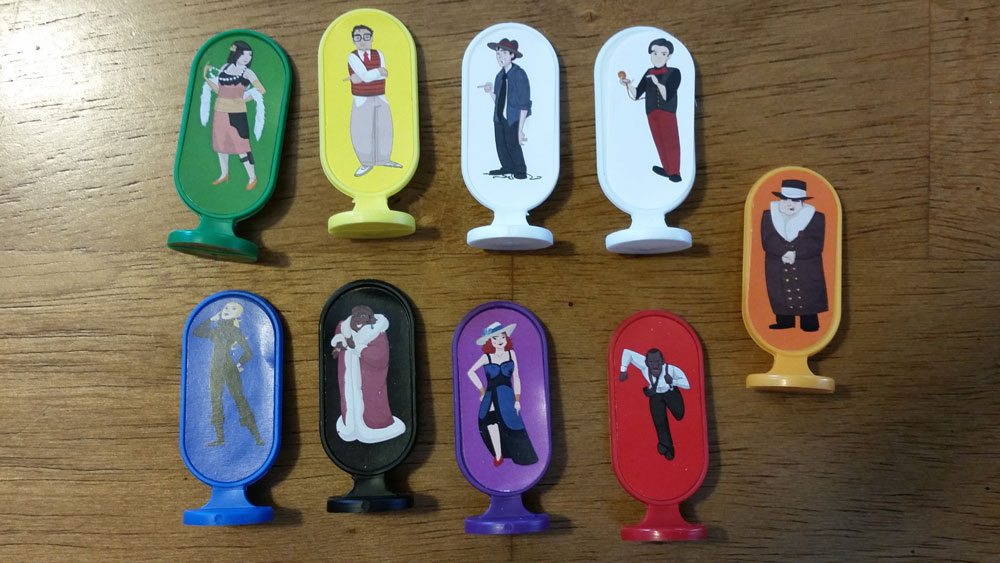
Booze Barons is a competitive card-based hidden identity/deduction game set in the Prohibition era that pits players against each other as they try to get their illegally-obtained liquor to the speakeasies and clubs that need it. Along the way, they can try to eliminate their competition by ratting them out to the police, while trying to prevent that same competition from ratting them out. It’s a game for 3-9 players. The prototype they sent didn’t have the labels on the box to give recommended ages, but there are no small parts. While the point of the game is to pretend you’re in the mob and deliver alcohol, there’s no violence–you’re trying to report your opponents to the police, not kill them. Some of the booze names imply objectionable activities, but I didn’t find anything in the game that gave me pause introducing it to my kids.
Booze Barons launched on Kickstarter last week. You can get a print-and-play version of the game for a $10 pledge, or the full commercial version for $32.
Note: I was sent a prototype to test the game for review. Artwork in the pictures shown below subject to change.
New to Kickstarter? Check out our crowdfunding primer.
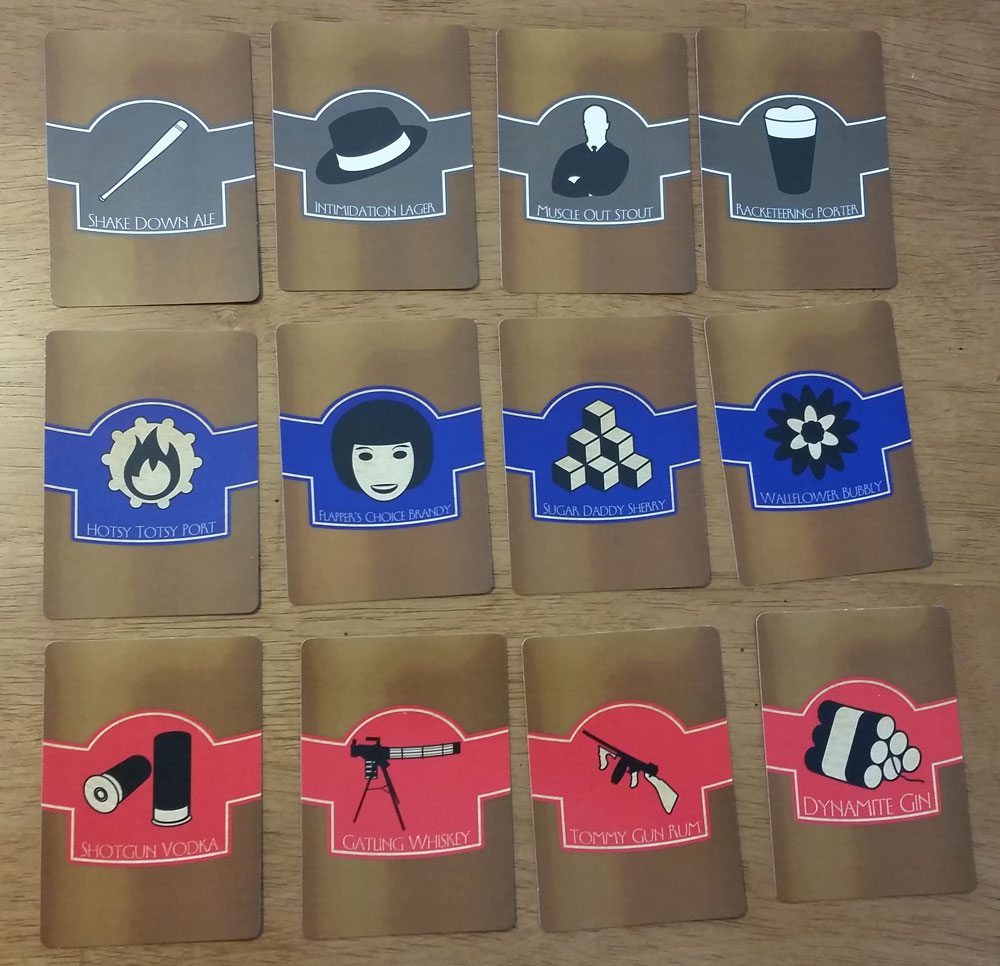
Components:
– 54 movement tokens
– 36 delivery cards
– 12 booze cards (Note that the rules I got and the Kickstarter page both say there are nine booze cards, but the prototype clearly has twelve.)
– 9 bootlegger cards
– 9 player pawns
– 6 location cards
– 2 snitch bonus tokens
– 1 Booze Baron (starting player) card
How to Play:
Place all six location cards on the table. Each location is both color- and icon-coded to match with deliveries. They all also have a special ability that players can activate while there.
Next, create a stack of Booze cards equal to the number of players. The game contains three types of booze: wine, liquor, and beer. When the number of players is divisible by three, you simply add equal numbers of each type; otherwise, you add one or two random cards to the mix as well. (The rules contain a table in case you don’t want to do the math.) These are shuffled and dealt to each player, and indicate what kind of booze the player will be trying to deliver.
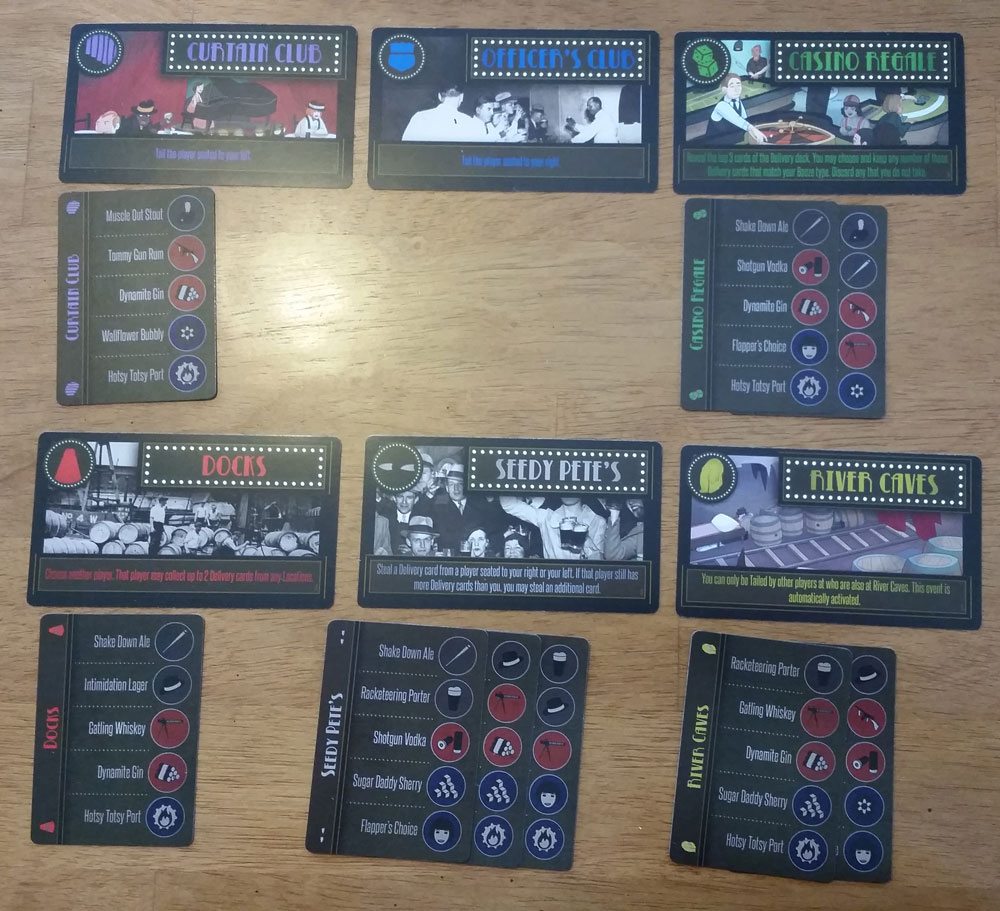
The Delivery deck is then shuffled. Nine cards are drawn and then placed below the corresponding location. In the initial setup, it’s possible that some locations will have multiple delivery cards while others will have none.
Each player selects a character or bootlegger, which consists of a card, matching set of movement tokens, and matching pawn.
The rules say that the last player to have made or mixed a drink goes first, but you’ll obviously need to alter this if you’re playing with kids. (Unless you interpret “drinks” to not include alcohol.) This player gets the Booze Baron card.
Each player secretly selects a location to travel to by placing one of their movement tokens face-down on the table. Once everyone is ready, all tokens are revealed simultaneously, and everyone moves their pawn to the chosen location. The only rule on movement is that you have to do it. You can’t choose the same location two rounds in a row (which would have the effect of you not moving). Otherwise, you can freely move from any location to any other location… until you’ve been exposed, anyway.
After movement is complete, the action phase begins. The phase starts with the Booze Baron, who can do one of four actions: Deliver, Tail, Event, or Pass.
Delivery is the bulk of the game, and generally what everyone needs to do for the first round or two. You simply select one of the delivery cards from your location and place it face up in front of you. However, you can only collect delivery cards that match the type of booze on your booze card. This is where the strategy starts to come into play: you need to collect as many delivery cards as you can, but you also need to try to keep the type of booze you are collecting a secret. Each card has multiple types on it, but you want to be careful about selecting cards that, when compared with the other deliveries you have, make it obvious which one you’re collecting.
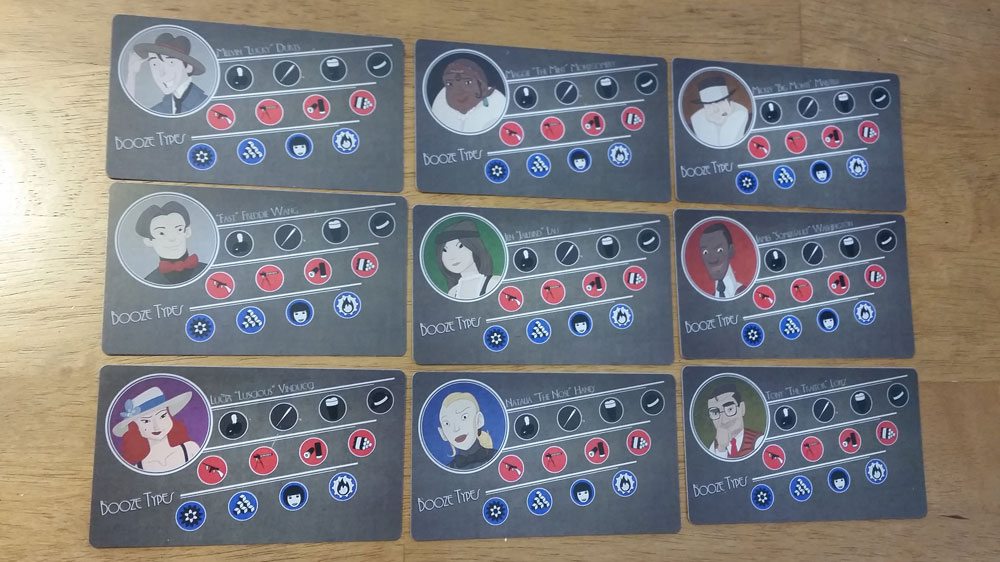
The Tail action allows you to look at one of your opponent’s stack of delivery cards for up to 20 seconds. This can only be done with an opponent at the same location as you. Once you look at them, you have two choices: steal or expose. Stealing is just what it sounds like: you take one of the delivery cards from your opponent’s stack. As with delivery, you can only steal if the card contains your type of booze. Exposing allows you to rat out the player to the police, which means guessing their booze type. If you are correct, they flip their Booze card face-up, and you collect their movement token for the current location, which is points for you at the end of the game and prevents them from returning to that location for the rest of the game. The first player to expose someone else is also given the snitch token, worth points at the end of the game. After being exposed, the player continues as before, with the only restriction that they cannot return to the location where they got exposed.
Playing the Event action involves activating the event at your current location. This may allow you to tail a player, steal, reveal cards, or more.
Passing does what it sounds like: you choose to take no action.
Once the Booze Baron has completed her action, play passes to the left. The round ends when all players have had an action, at which point there’s some housekeeping to be done. All delivery cards collected that round are flipped face down. New delivery cards, equal to number of players divided by two, are drawn and placed in the appropriate locations.
The game ends when, at the end of a round, either zero or one players remain unexposed. At that point, everyone tallies their points to figure out a winner. Points are given for delivery cards collected, location indicators each player has (both their own and other player’s), and snitch tokens.
The Verdict
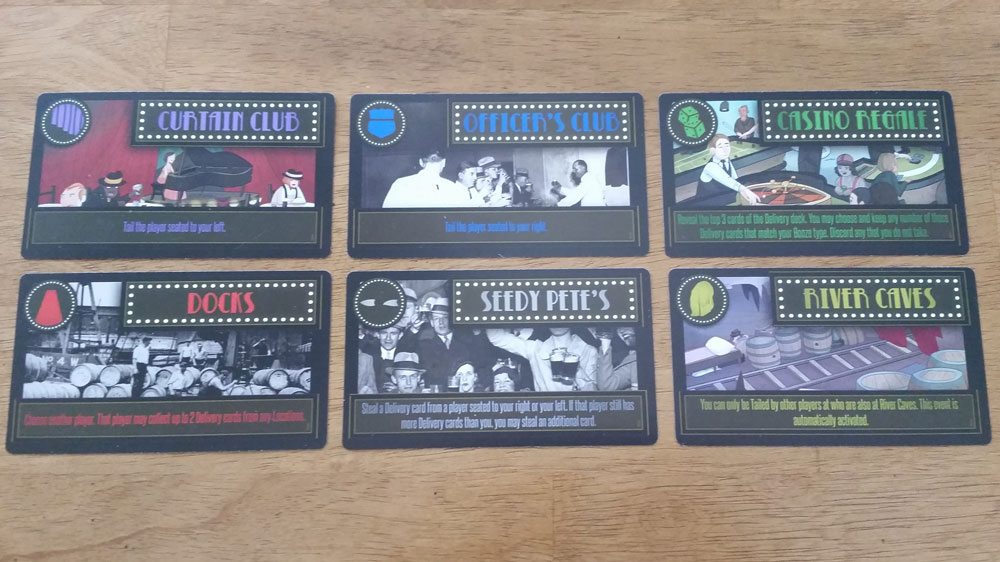
Booze Barons is one of those games that turns out to be deeper than it looks. At first glance, it seemed like a simple game of moving around the board and collecting cards, and sometimes guessing what your opponent had–something like a mob-themed Clue. However, once I started playing I realized that there was a lot more there. Each turn, you have to weigh your movement options: do you do to the location that has a card you need, or do you try to guess where your opponent it going to go so that you can move there with them and tail them? If you do decide to go for a delivery, you have to be careful as well: is that card going to expose the type of booze you have, because it doesn’t share enough other icons with the rest of the ones you’ve collected? Turn order also becomes important: you are more likely to tail a player if they’ve gone before you, because otherwise they may tail you back. This again adds an extra consideration to each turn.
We played several games with the family and really enjoyed each one. It took the kids a bit of time to figure out the strategy, particularly how to not collect cards that didn’t reveal themselves right away, but we definitely enjoyed it.
There’s one aspect of the game we didn’t get to really try out. Each type of booze falls into one of the three categories (wine, liquor, beer). Other players who are collecting the same category are actually on your team, even though you don’t have any way of knowing that as the game begins. Exposing a player on your team counts against you, as their location card is worth negative points. With a big group–remember that the game supports up to nine players–I think this would add a really interesting added dynamic. I could see a situation where you target a player and tail them for a bit, only to discover to your dismay that they’re on your team. But at that point, not exposing them reveals something important to the other players. I do plan to bring Booze Barons out at my next game night, and I’m looking forward to seeing how it will play with the larger group.
But even with smaller groups, Booze Barons is a great game, and one I’d highly recommend you support.




